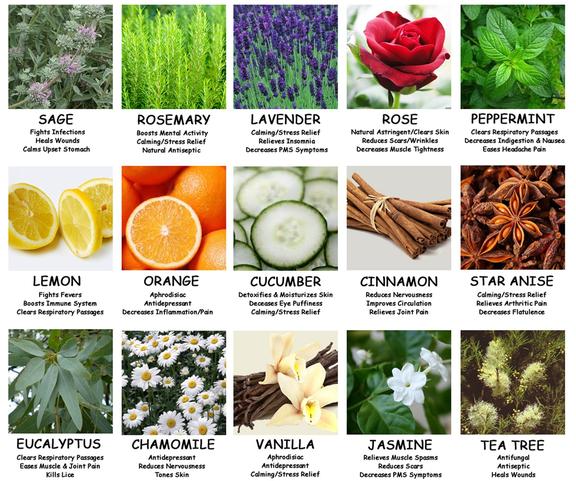This study was carried out used some natural substances as spices and their volatile oils replaced of chemical substances which had side effects on consumer health and improvement shelf- life and safety of minced beef. Three different minced beef treatments as follow:
Addition of spices (cumin, black seeds, marjoram, rosemary and sage) under different levels 0.50 and 1 %, while addition of volatile oils under different levels 0.25 and 0.50 % and control sample (without any additions). All of these treatments were stored at 4±1º C up to 15 day, and evaluated chemically, physically, microbiologically and sensory at intervals periods 0, 3, 6, 9,12 and 15 day. The most important obtained results from this study could be summarized as follow:
-
Minced beef without any additions (control sample) which was used in preparation contained; 73.33% moisture, 22.56% crude protein, 3.10%, crud fat and 1.13% ash.
-
Addition of spices and/or their volatile oils to minced beef caused slight decreased in moisture content at zero-time of storage. Moreover, moisture content of different minced beef treatments under investigation decreased during storage at 4±1º C up to 15 day compared with control sample which had significant (p≥ 0.05) decreased in moisture content.
-
Addition of spices and/or their volatile oils to minced beef did not affect the protein content of different minced beef treatments at zero-time of storage. Moreover, protein content of different minced beef treatments under investigation decreased during storage at 4±1º C up to 15 day compared with control sample which had significant (p≥ 0.05) decreased in protein content.
-
During storage at 4±1º C up to 15 day the crude fat and ash contents recorded slightly increase in all minced beef treatments under investigation. Crude fat content ranged between 3.10 and 6.41 % at zero-time of storage in all minced beef samples. While, crude fat increased at the end of storage periods to 8.39 and 10.50 %. Meanwhile, ash content ranged between 0.95 and 1.05 % at zero-time of storage in all minced beef samples. While, ash content increased at the end of storage period to 1.10 and 1.19 %.
-
The results indicated that different minced beef treatments had less pH values than minced beef (control sample) 6.10. Also, addition of spices and/ or their volatile oils at different levels led to slight increase in pH values. Moreover, slight decrease in pH values were noticed in all treatments during storage at 4±1º C up to 15 day ,so the pH values in minced beef contained spices were 6.49 - 6.12, the pH values in minced beef contained essential oils was 6.46 – 6.15.
-
Although water holding capacity (WHC) of all different minced beef treatments were convergent at zero time. Moreover, minced beef contained essential oil of marjoram under level addition 0.50 % showed increasing in WHC (64.81 %),sample contained rosemary powder under level addition 1 % (64.64 %) and control sample display slight decreasing in WHC (60.37 %) compared with other treatments. Also, WHC had significant (p≥ 0.05) decreased with increasing storage periods. Minced beef samples contained essential oil of cumin and sage under level addition 0.50 % recorded the high WHC (60.43 and 60.22 %) respectively, compared with control sample.
-
Total volatile nitrogen contents (TVN) in all minced beef treatments increased with the prolongation of storage periods. Minced beef contained essential oil of marjoram recorded low TVN ( 9.25 mg/100g), minced beef contained essential oil of sage was 9.25 mg/100g. Whereas, control sample recorded the high value in TVN ( 19.37 mg/100g).
-
Thiobarbituric acid values (TBA) in all minced beef samples were increased through the storage periods with slight variations between minced beef samples contained essential oil. The obtained results ranged between 0.51 and 0.81 mg malonaldehyde/Kg at the end of storage periods. While, it was 1.96 mg malonaldehyde/Kg. in control sample at the end of storage period.
-
Peroxide value in all minced beef samples tended to significant (p≥ 0.05) increase with the progressive of storage periods. Also, it could be noticed that minced beef samples contained rosmary essential oil and rosmary powder had the lowest peroxide value during storage periods.
-
Although the expiration date of minced beef storage at 4±1º C is not exceed three The samples contained spices and/or their volatile oils were acceptable after 12 day . By use of (TVN) and (TBA) values as indicators on the contrary. The minced beef sample (as control) was unacceptable for human consumption after three days.
-
Addition of spices and/or their volatile oils reduced the total bacterial counts when compared with control sample. The lowest total bacterial count observed in minced beef contained essential oil compared with minced beef contained spices . Also , the highest total bacterial count observed in minced beef without any addition (control sample).
-
Pyschrotrophic bacteria counts in all treatments at zero time were similar, but there is significant (p≥ 0.05) difference between samples with progressive of storage periods. Pyschrotrophic bacteria counts reduced with addition of essential oil compared with spices powder and control sample.
-
Staphylococcus aureus counts at zero time was higher in control sample; (4.30 Log CFU/g) in comparison with other minced beef samples which ranged between 2.7 to 3.69 Log CFU/g in minced beef samples contained essential oils, and ranged between 3.45 to 4.10 Log CFU/g in minced beef samples contained spices. With progressive of storage period Staphylococcus aureus counts was increased to 6.15 Log CFU/g in control sample. whereas, Staphylococcus aureus counts was reduced and disappear in minced beef samples contained spices and/or their volatile oils cause with inhibitory effects of these substances.
-
Colliform group counts at zero time were higher in control sample (4.50 Log CFU/g) in comparison with other minced beef samples which ranged between 2.45 to 3.59 Log CFU/g in minced beef samples contained essential oils, and ranged between 3.15 to 4.10 Log CFU/g in minced beef samples contained spices. With progressive of storage periods colliform group counts was significant (p≥ 0.05) increased to 8.65 Log CFU/g in control sample. Whereas, their counts were reduced and disappear in minced beef samples contained spices and/or their volatile oils cause with inhibitory effects of these substances.
-
All treatments of minced beef were free from Salmonella at a zero time or throughout the storage periods.
-
The antioxidant activity of essential oils at different concentration by using DPPH radical scavenging was observed. It was noticed that sage essential oil had the highest inhibition percentage of radical DPPH (83. 76 %). On the other hand, the inhibition percentage of BHT was (89.63%) under low concentration (10 µg).
-
All essential oils showed antimicrobial activity against tested microorganisms:
A- cumin essential oil had significantly (p≥ 0.05) inhibitory effect against all tested microorganisms except Rhizopus nigricans.
B- Black seeds essential oil had significantly (p≥ 0.05) inhibitory effect against all tested microorganisms except Bacillus subtilis , Klebsiella pneumoniae , Proteus vulgaris, Salmonella typhi , Aspergillus flavus, Rhizopus nigricans and Saccharomyces cerevisiae.
C- marjoram essential oil had significantly (p≥ 0.05) inhibitory effect against all studied microorganisms except Listeria monocytogenes and Aspergillus ochraceus.
D- Rosemary essential oil had significantly (p≥ 0.05) inhibitory effect against all studied microorganisms except Listeria monocytogenes and Pseudomonas aeruginosa. .
E- Sage essential oil had significantly (p≥ 0.05) inhibitory effect against all tested microorganisms except Bacillus subtilis, Listeria monocytogenes, Pseudomonas aeruginosa, Salmonella typhi, Aspergillus flavus and Aspergillus ochraceus
-
Organoleptic evaluation of minced beef samples:-
-
According to the obtained results of organoleptic evaluation. It was found that: The highest color score were given in sample contained black seeds essential oil at level 0.25 % and sample contained powder of sage at level 0.50 %.
-
The highest flavor score were given in sample contained black seeds essential oil at level 0.25 %, sample contained cumin powder at level 0.50 % and sample contained sage powder at level 0.50 %.
-
The highest tenderness score were given in sample contained black seeds essential oil at level 0.25 %, sample contained cumin powder at level 0.50 %, sample contained marjoram powder at level 0.50 %, sample contained rosmary at level 1 % and sample contained sage powder at level 0.50 % with non-significant differences.
-
The highest value of over all acceptability as assessed organoleptically was for samples which contained black seeds essential oil at level 0.25 % and sample contained cumin powder at level 0.50 %.
-
The chemical components of essential oils (cumin, black seeds, marjoram, rosemary and sage) were fractionated and identified by GC and GC-MS techniques:
-
The chemical components of cumin essential oil were fractionated and identified by GC and GC-MS techniques, it could be noticed that, essential components were identified in cumin essential oil. The compounds of cumin essential oils such as cumin alcohol (21.60 %), cumin aldehyde (19.30 %), acoradiene (17.20 %), β-Caryophyllene (15.40 %), β-Pinene (14.70 %) and γ-Terpinene (8 %).
-
The chemical components of black seeds essential oil were fractionated and identified by GC and GC-MS techniques, it could be noticed that, essential components were identified in cumin essential oil. The compounds of black seeds essential oils such as p-Cymene (35,80 %), Sabinene (17.10 %), Myrcene (13.30 %), α-Terpinene (10.90 %) and α-Thujene (7.90 %).
-
The chemical components of marjoram essential oil were fractionated and identified by GC and GC-MS techniques, it could be noticed that, 11 essential components were identified in marjoram essential oil. The compounds of marjoram essential oils such as: cis-Sabinene hydrate22) , %), α-Terpinene ( % 28.27), 3- Cyclohexan-1-ol (18.98 %), γ-Terpinene (14.59 %), trans-Sabinene hydrate (6.64 %) and Terpinolene (1.96 %).
-
The chemical components of rosemary essential oil were fractionated and identified by GC and GC-MS techniques, it could be noticed that, essential components were identified in rosemary essential oil. The compounds of marjoram essential oils such as γ-Terpinene (27.60 %), Limonene (20%), Camphor (12.6 %), α -pinene (11.3 %), β-pinene (8 %) and Camphene (5.6 %)
-
The chemical components of sage essential oil were fractionated and identified by GC and GC-MS techniques, it could be noticed that, 12 essential components were identified in sage essential oil. The compounds of marjoram essential oils such as: Trans- Caryophyllene (42.96 %), α-Pinene (41.94 %),1,8-ineole(Eucalyptol (8.90 %) and Camphor (5.18 %).


